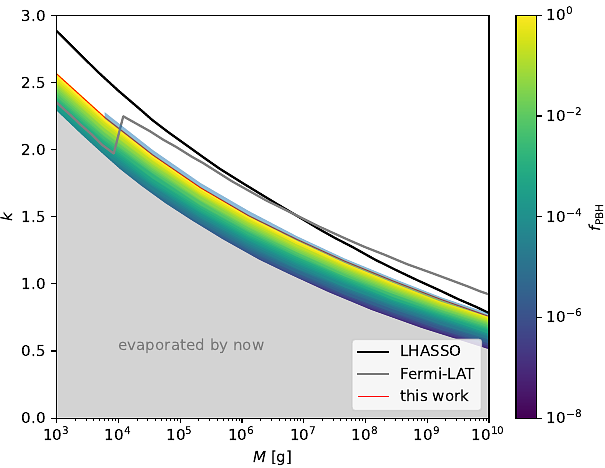Constraining the parameters of heavy dark matter and memory-burdened primordial black holes with DAMPE electron measurements

Constraining the parameters of heavy dark matter and memory-burdened primordial black holes with DAMPE electron measurements
Tian-Ci Liu, Ben-Yang Zhu, Yun-Feng Liang, Xiao-Song Hu, En-Wei Liang
AbstractThe DArk Matter Particle Explorer (DAMPE) is a space-based instrument for detecting GeV-TeV cosmic rays and gamma rays. High-energy cosmic rays could be emitted from several dark matter candidates theoretically, such as the heavy dark matter (HDM) and the primordial black holes (PBHs). HDM particles with a mass of $>100\,{\rm TeV}$ could decay into $\gtrsim 10\,{\rm TeV}$ electron/positron pairs. PBHs with a mass of $\lesssim 10^{10}\,{\rm g}$ would survive to the present day if the Hawking radiation is significantly suppressed due to the memory burden effect and can also lead to the emission of $\gtrsim 10\,{\rm TeV}$ electrons. In this work, we use the DAMPE electron measurements to obtain the constraints on the decay lifetime $\tau$ of HDM and the entropy index $k$ of memory-burdened PBHs at $95 \%$ confidence level. The constraints on the fraction $f_{\rm PBH}$ are also derived with a fixed $k$. Furthermore, the high-energy tail of the DAMPE electron spectrum shows a sign of going upwards, possibly suggesting the presence of an additional component; we discuss if this spectral behavior is real, which parameter space is required for it to be attributed to HDM or PBH. We will show that the required parameters have been constrained by existing limits.